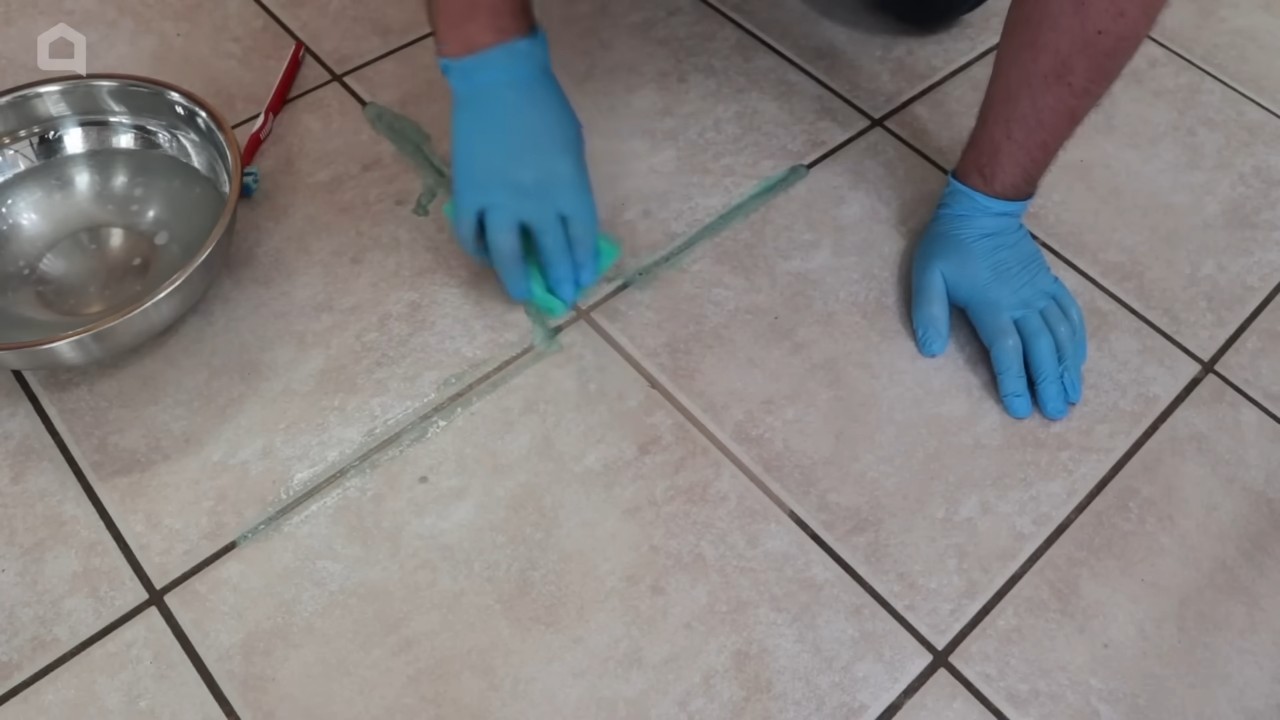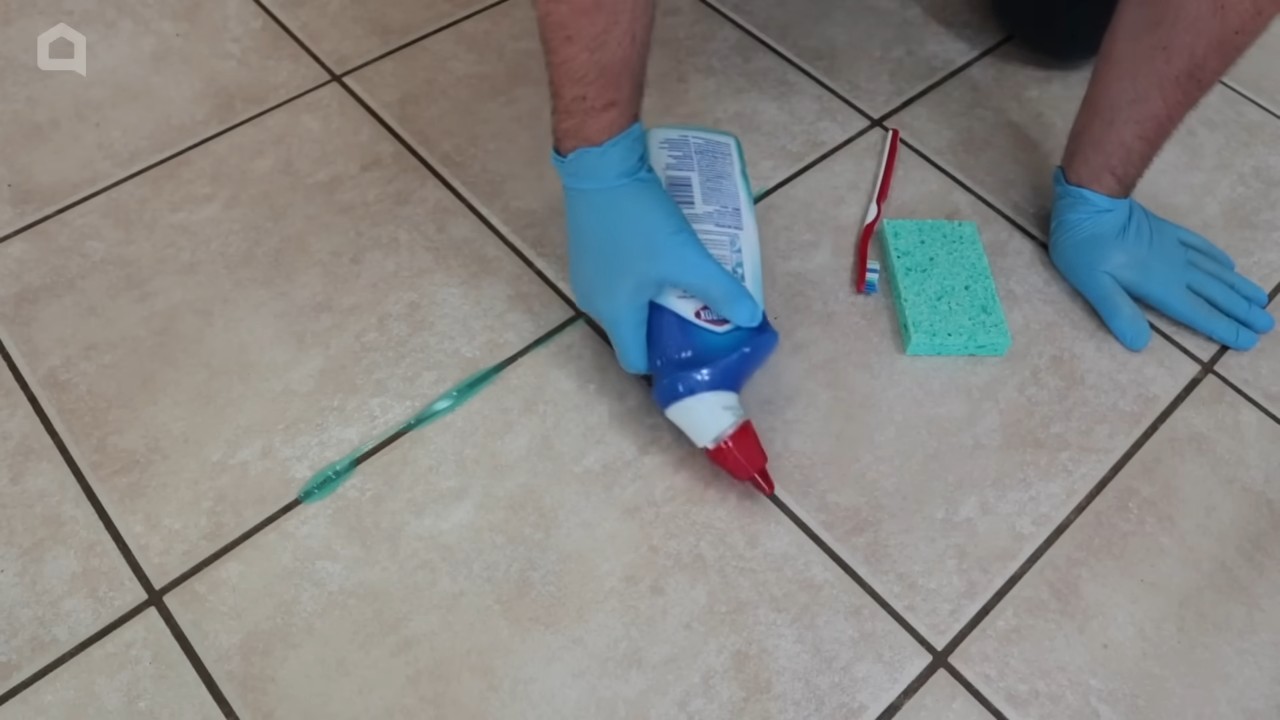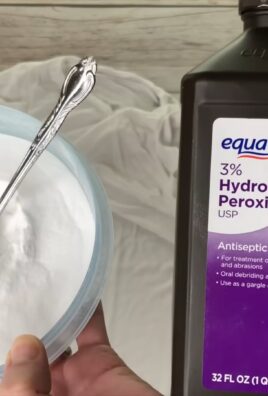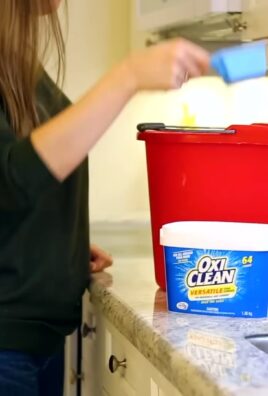Toothpaste uses beyond brushing – who knew this everyday essential held so many secrets? I’m always on the lookout for clever DIY solutions around the house, and I was absolutely floored when I discovered the surprising versatility of toothpaste. We all know it keeps our pearly whites sparkling, but its cleaning and polishing power extends far beyond the bathroom sink!
While the modern toothpaste we know and love is a relatively recent invention, the concept of cleaning teeth dates back centuries. Ancient Egyptians used a powder made from ingredients like crushed pumice and eggshells to keep their smiles bright. Fast forward to today, and we have tubes filled with fluoride and other powerful cleaning agents – the very same agents that make toothpaste a surprisingly effective tool for tackling household chores.
Let’s face it, life gets messy! Scuffs on your shoes, stubborn stains on your clothes, even tarnish on your silverware – these little annoyances can add up. That’s where these toothpaste uses beyond brushing come in handy. Instead of reaching for harsh chemicals or expensive specialty cleaners, you can often find a solution right in your bathroom cabinet. I’m excited to share these simple, cost-effective, and surprisingly effective DIY tricks that will make your life a little easier and your home a little brighter!

Beyond the Brush: Unexpected Uses for Toothpaste You Need to Know
Okay, let’s be honest. We all have a tube of toothpaste sitting in our bathroom. We use it to keep our pearly whites sparkling, but did you know that toothpaste is a surprisingly versatile cleaning agent and problem-solver around the house? I’m going to share some of my favorite unexpected uses for toothpaste that will blow your mind and save you money!
Cleaning Silverware and Jewelry
Tarnished silverware and dull jewelry can be a real eyesore. But before you reach for expensive silver polish, grab your trusty tube of toothpaste!
What you’ll need:
* Toothpaste (non-gel, preferably white)
* Soft cloth or toothbrush
* Water
Step-by-step instructions:
1. Apply a small amount of toothpaste: Squeeze a pea-sized amount of toothpaste onto a soft cloth or an old, soft-bristled toothbrush.
2. Gently rub the item: Gently rub the toothpaste onto the tarnished silverware or jewelry. For intricate designs, use the toothbrush to get into those hard-to-reach areas. Be careful not to scrub too hard, especially on delicate jewelry, as some toothpastes can be mildly abrasive.
3. Rinse thoroughly: Rinse the item thoroughly with warm water, making sure to remove all traces of toothpaste.
4. Dry and buff: Dry the item with a clean, soft cloth. Buff it gently to restore its shine.
Important Note: Avoid using toothpaste on pearls, opals, or other delicate gemstones, as it can damage their surface.
Removing Scuff Marks from Leather Shoes
Scuff marks on leather shoes can make them look old and worn. But don’t despair! Toothpaste can come to the rescue.
What you’ll need:
* Toothpaste (non-gel, preferably white)
* Soft cloth
* Water
Step-by-step instructions:
1. Apply toothpaste to the scuff mark: Apply a small amount of toothpaste directly to the scuff mark.
2. Gently rub the area: Gently rub the toothpaste into the scuff mark using a soft cloth. Use circular motions.
3. Wipe away excess toothpaste: Wipe away any excess toothpaste with a damp cloth.
4. Dry the shoes: Allow the shoes to air dry completely.
Pro Tip: Test the toothpaste on a small, inconspicuous area of the shoe first to make sure it doesn’t discolor the leather.
Cleaning Chrome Fixtures
Chrome fixtures in your bathroom and kitchen can easily become dull and stained with water spots. Toothpaste can restore their shine and sparkle.
What you’ll need:
* Toothpaste (non-gel, preferably white)
* Soft cloth or sponge
* Water
Step-by-step instructions:
1. Apply toothpaste to the fixture: Apply a small amount of toothpaste to the chrome fixture.
2. Rub the fixture: Rub the toothpaste onto the fixture using a soft cloth or sponge.
3. Rinse thoroughly: Rinse the fixture thoroughly with warm water.
4. Dry and buff: Dry the fixture with a clean, soft cloth. Buff it gently to restore its shine.
Removing Water Rings from Wood Furniture
Those pesky water rings on your wood furniture can be a real pain. But before you panic, try this toothpaste trick.
What you’ll need:
* Toothpaste (non-gel, preferably white)
* Soft cloth
* Furniture polish (optional)
Step-by-step instructions:
1. Apply toothpaste to the water ring: Apply a small amount of toothpaste directly to the water ring.
2. Gently rub the area: Gently rub the toothpaste into the water ring using a soft cloth. Use circular motions. Be gentle!
3. Wipe away excess toothpaste: Wipe away any excess toothpaste with a damp cloth.
4. Dry the area: Dry the area with a clean, soft cloth.
5. Apply furniture polish (optional): If desired, apply furniture polish to the area to restore its shine.
Important Note: Test the toothpaste on a small, inconspicuous area of the furniture first to make sure it doesn’t damage the finish.
Defogging Bathroom Mirrors
Tired of foggy bathroom mirrors after a hot shower? Toothpaste can help!
What you’ll need:
* Toothpaste (non-gel, preferably white)
* Soft cloth
* Water
Step-by-step instructions:
1. Apply a thin layer of toothpaste: Apply a thin layer of toothpaste to the entire surface of the mirror.
2. Wipe the mirror: Wipe the mirror with a damp cloth until the toothpaste is completely removed.
3. Dry the mirror: Dry the mirror with a clean, soft cloth.
How it works: The toothpaste creates a thin film on the mirror that prevents condensation from forming.
Cleaning Your Cell Phone Screen
Our cell phone screens are magnets for fingerprints and smudges. Toothpaste can help keep them clean and clear.
What you’ll need:
* Toothpaste (non-gel, preferably white)
* Soft cloth
* Water
Step-by-step instructions:
1. Apply a tiny amount of toothpaste: Apply a very tiny amount of toothpaste to a soft cloth.
2. Gently rub the screen: Gently rub the cloth onto the screen in circular motions. Be very careful not to get any toothpaste into the phone’s openings.
3. Wipe away excess toothpaste: Wipe away any excess toothpaste with a slightly damp cloth.
4. Dry the screen: Dry the screen with a clean, soft cloth.
Important Note: Use extreme caution when cleaning your cell phone screen with toothpaste. Avoid getting any toothpaste into the phone’s openings, and do not apply too much pressure.
Removing Crayon Marks from Walls
If you have kids, you know the struggle of crayon marks on walls. Toothpaste can be a lifesaver!
What you’ll need:
* Toothpaste (non-gel, preferably white)
* Soft cloth
* Water
Step-by-step instructions:
1. Apply toothpaste to the crayon marks: Apply a small amount of toothpaste directly to the crayon marks.
2. Gently rub the area: Gently rub the toothpaste into the crayon marks using a soft cloth.
3. Wipe away excess toothpaste: Wipe away any excess toothpaste with a damp cloth.
4. Dry the wall: Dry the wall with a clean, soft cloth.
Pro Tip: Test the toothpaste on a small, inconspicuous area of the wall first to make sure it doesn’t damage the paint.
Treating Minor Burns
Toothpaste can provide temporary relief from minor burns.
What you’ll need:
* Toothpaste (non-gel, preferably white)
* Water
Step-by-step instructions:
1. Cool the burn: Immediately cool the burn under cold running water for several minutes.
2. Apply a thin layer of toothpaste: Apply a thin layer of toothpaste to the burn.
3. Leave it on: Leave the toothpaste on the burn until the pain subsides.
Important Note: This is only for minor burns. For severe burns, seek medical attention immediately. Toothpaste should not be used as a substitute for proper medical care.
Cleaning Your Iron
A dirty iron can leave marks on your clothes. Toothpaste can help clean the s
Okay, let’s be honest. We all have a tube of toothpaste sitting in our bathroom. We use it to keep our pearly whites sparkling, but did you know that toothpaste is a surprisingly versatile cleaning agent and problem-solver around the house? I’m going to share some of my favorite unexpected uses for toothpaste that will blow your mind and save you money!
Cleaning Silverware and Jewelry
Tarnished silverware and dull jewelry can be a real eyesore. But before you reach for expensive silver polish, grab your trusty tube of toothpaste!
What you’ll need:
* Toothpaste (non-gel, preferably white)
* Soft cloth or toothbrush
* Water
Step-by-step instructions:
1. Apply a small amount of toothpaste: Squeeze a pea-sized amount of toothpaste onto a soft cloth or an old, soft-bristled toothbrush.
2. Gently rub the item: Gently rub the toothpaste onto the tarnished silverware or jewelry. For intricate designs, use the toothbrush to get into those hard-to-reach areas. Be careful not to scrub too hard, especially on delicate jewelry, as some toothpastes can be mildly abrasive.
3. Rinse thoroughly: Rinse the item thoroughly with warm water, making sure to remove all traces of toothpaste.
4. Dry and buff: Dry the item with a clean, soft cloth. Buff it gently to restore its shine.
Important Note: Avoid using toothpaste on pearls, opals, or other delicate gemstones, as it can damage their surface.
Removing Scuff Marks from Leather Shoes
Scuff marks on leather shoes can make them look old and worn. But don’t despair! Toothpaste can come to the rescue.
What you’ll need:
* Toothpaste (non-gel, preferably white)
* Soft cloth
* Water
Step-by-step instructions:
1. Apply toothpaste to the scuff mark: Apply a small amount of toothpaste directly to the scuff mark.
2. Gently rub the area: Gently rub the toothpaste into the scuff mark using a soft cloth. Use circular motions.
3. Wipe away excess toothpaste: Wipe away any excess toothpaste with a damp cloth.
4. Dry the shoes: Allow the shoes to air dry completely.
Pro Tip: Test the toothpaste on a small, inconspicuous area of the shoe first to make sure it doesn’t discolor the leather.
Cleaning Chrome Fixtures
Chrome fixtures in your bathroom and kitchen can easily become dull and stained with water spots. Toothpaste can restore their shine and sparkle.
What you’ll need:
* Toothpaste (non-gel, preferably white)
* Soft cloth or sponge
* Water
Step-by-step instructions:
1. Apply toothpaste to the fixture: Apply a small amount of toothpaste to the chrome fixture.
2. Rub the fixture: Rub the toothpaste onto the fixture using a soft cloth or sponge.
3. Rinse thoroughly: Rinse the fixture thoroughly with warm water.
4. Dry and buff: Dry the fixture with a clean, soft cloth. Buff it gently to restore its shine.
Removing Water Rings from Wood Furniture
Those pesky water rings on your wood furniture can be a real pain. But before you panic, try this toothpaste trick.
What you’ll need:
* Toothpaste (non-gel, preferably white)
* Soft cloth
* Furniture polish (optional)
Step-by-step instructions:
1. Apply toothpaste to the water ring: Apply a small amount of toothpaste directly to the water ring.
2. Gently rub the area: Gently rub the toothpaste into the water ring using a soft cloth. Use circular motions. Be gentle!
3. Wipe away excess toothpaste: Wipe away any excess toothpaste with a damp cloth.
4. Dry the area: Dry the area with a clean, soft cloth.
5. Apply furniture polish (optional): If desired, apply furniture polish to the area to restore its shine.
Important Note: Test the toothpaste on a small, inconspicuous area of the furniture first to make sure it doesn’t damage the finish.
Defogging Bathroom Mirrors
Tired of foggy bathroom mirrors after a hot shower? Toothpaste can help!
What you’ll need:
* Toothpaste (non-gel, preferably white)
* Soft cloth
* Water
Step-by-step instructions:
1. Apply a thin layer of toothpaste: Apply a thin layer of toothpaste to the entire surface of the mirror.
2. Wipe the mirror: Wipe the mirror with a damp cloth until the toothpaste is completely removed.
3. Dry the mirror: Dry the mirror with a clean, soft cloth.
How it works: The toothpaste creates a thin film on the mirror that prevents condensation from forming.
Cleaning Your Cell Phone Screen
Our cell phone screens are magnets for fingerprints and smudges. Toothpaste can help keep them clean and clear.
What you’ll need:
* Toothpaste (non-gel, preferably white)
* Soft cloth
* Water
Step-by-step instructions:
1. Apply a tiny amount of toothpaste: Apply a very tiny amount of toothpaste to a soft cloth.
2. Gently rub the screen: Gently rub the cloth onto the screen in circular motions. Be very careful not to get any toothpaste into the phone’s openings.
3. Wipe away excess toothpaste: Wipe away any excess toothpaste with a slightly damp cloth.
4. Dry the screen: Dry the screen with a clean, soft cloth.
Important Note: Use extreme caution when cleaning your cell phone screen with toothpaste. Avoid getting any toothpaste into the phone’s openings, and do not apply too much pressure.
Removing Crayon Marks from Walls
If you have kids, you know the struggle of crayon marks on walls. Toothpaste can be a lifesaver!
What you’ll need:
* Toothpaste (non-gel, preferably white)
* Soft cloth
* Water
Step-by-step instructions:
1. Apply toothpaste to the crayon marks: Apply a small amount of toothpaste directly to the crayon marks.
2. Gently rub the area: Gently rub the toothpaste into the crayon marks using a soft cloth.
3. Wipe away excess toothpaste: Wipe away any excess toothpaste with a damp cloth.
4. Dry the wall: Dry the wall with a clean, soft cloth.
Pro Tip: Test the toothpaste on a small, inconspicuous area of the wall first to make sure it doesn’t damage the paint.
Treating Minor Burns
Toothpaste can provide temporary relief from minor burns.
What you’ll need:
* Toothpaste (non-gel, preferably white)
* Water
Step-by-step instructions:
1. Cool the burn: Immediately cool the burn under cold running water for several minutes.
2. Apply a thin layer of toothpaste: Apply a thin layer of toothpaste to the burn.
3. Leave it on: Leave the toothpaste on the burn until the pain subsides.
Important Note: This is only for minor burns. For severe burns, seek medical attention immediately. Toothpaste should not be used as a substitute for proper medical care.
Cleaning Your Iron
A dirty iron can leave marks on your clothes. Toothpaste can help clean the soleplate and remove residue.
What you’ll need:
* Toothpaste (non-gel, preferably white)
* Soft cloth
* Water
Step-by-step instructions:
1. Make sure the iron is cool and unplugged: This is crucial for safety!
2. Apply toothpaste to the soleplate: Apply a small amount of toothpaste to the soleplate of the iron.
3. Gently rub the soleplate: Gently rub the toothpaste onto the soleplate using a soft cloth.
4. Wipe away excess toothpaste: Wipe away any excess toothpaste with a damp cloth.
5. Dry the soleplate: Dry the soleplate with a clean, soft cloth.
Important Note: Avoid getting toothpaste into the steam vents of the iron.
Removing Stains from Clothes
Toothpaste can be used as a pre-treatment for certain stains on clothes.
What you’ll need:
* Toothpaste (non-gel, preferably white)
* Soft cloth
* Water
* Laundry detergent
Step-by-step instructions:
1. Apply toothpaste to the stain: Apply a small amount of toothpaste directly to the stain.
2.

Conclusion
So, there you have it! Unlocking the potential of your humble tube of toothpaste goes far beyond just a sparkling smile. We’ve explored a range of surprising and effective uses for toothpaste, transforming it from a simple oral hygiene product into a versatile household helper. From banishing blemishes and soothing bug bites to polishing silver and cleaning sneakers, the possibilities are truly remarkable.
But why is this DIY trick a must-try? Simply put, it’s about resourcefulness and convenience. Instead of reaching for a specialized cleaning product or expensive treatment, you can often find a solution already residing in your bathroom cabinet. It’s cost-effective, readily available, and surprisingly powerful. Plus, it’s a fun way to experiment and discover the hidden potential of everyday items.
Consider these variations to further tailor the toothpaste trick to your specific needs. For tougher stains on clothing, try mixing a small amount of toothpaste with baking soda for an extra boost of cleaning power. When polishing silver, use a soft-bristled toothbrush to gently work the toothpaste into intricate details. And for those stubborn pimples, opt for a plain, non-gel toothpaste to avoid irritation. Remember to always test a small, inconspicuous area first, especially when dealing with delicate surfaces or fabrics.
We’ve shown you how to use toothpaste for uses beyond brushing, now it’s your turn to put these tips to the test! We wholeheartedly encourage you to try out these DIY tricks and experience the magic of toothpaste for yourself. Whether you’re tackling a tarnished faucet, a scuffed shoe, or a pesky pimple, we’re confident that you’ll be amazed by the results.
Don’t just take our word for it – experiment, explore, and discover your own unique uses for toothpaste. And most importantly, share your experiences with us! We’d love to hear about your successes, your challenges, and any creative variations you come up with. Leave a comment below, share your photos on social media, and let’s create a community of toothpaste enthusiasts who are unlocking the full potential of this everyday essential. Let us know what worked best for you and if you have any other clever uses for toothpaste that we haven’t covered. Your insights could help others discover even more amazing applications for this versatile product. So go ahead, grab that tube of toothpaste, and get ready to be amazed!
Frequently Asked Questions (FAQ)
Is it safe to use any type of toothpaste for these DIY tricks?
Generally, plain white toothpaste (not gel) is recommended for most of these DIY applications. Gel toothpastes often contain ingredients that are not as effective for cleaning or stain removal. Avoid using whitening toothpastes on delicate surfaces, as they can be abrasive. Always test a small, inconspicuous area first to ensure the toothpaste doesn’t damage the surface. For skin applications, opt for a plain, non-gel toothpaste to minimize the risk of irritation. If you have sensitive skin, consult a dermatologist before applying toothpaste to your face.
Can I use toothpaste to remove scratches from my phone screen?
While some people claim that toothpaste can remove minor scratches from phone screens, it’s generally not recommended. Toothpaste is abrasive and can potentially damage the screen’s coating or even create more scratches. There are specialized screen repair kits and professional services that are much safer and more effective for removing scratches from electronic devices. It’s best to avoid using toothpaste on your phone screen to prevent further damage.
How long should I leave toothpaste on a blemish?
For treating blemishes, apply a small dab of plain, non-gel toothpaste directly onto the pimple before bed. Leave it on overnight and wash it off in the morning with warm water. The toothpaste helps to dry out the blemish and reduce inflammation. However, avoid leaving it on for extended periods during the day, as it can dry out the surrounding skin. If you experience any irritation or redness, discontinue use immediately.
Will toothpaste damage my silver jewelry?
Toothpaste can be used to polish silver jewelry, but it’s important to use it sparingly and gently. Apply a small amount of toothpaste to a soft cloth and gently rub it onto the silver, focusing on tarnished areas. Rinse thoroughly with water and dry with a clean cloth. Avoid using toothpaste on delicate or antique silver pieces, as it can be abrasive. For valuable or intricate silver items, consider using a professional silver polish instead.
Can I use toothpaste to clean my car headlights?
Yes, toothpaste can be used to clean cloudy car headlights. Apply a generous amount of toothpaste to the headlight and scrub it in a circular motion using a damp cloth or sponge. Rinse thoroughly with water and dry with a clean cloth. Repeat the process if necessary. This can help to remove oxidation and improve the clarity of your headlights. However, for heavily oxidized headlights, you may need to use a more specialized headlight restoration kit.
Is it safe to use toothpaste on my skin if I have allergies?
If you have known allergies to any ingredients commonly found in toothpaste (such as fluoride, flavoring agents, or preservatives), it’s best to avoid using toothpaste on your skin. Always check the ingredient list before applying toothpaste to your face or body. If you’re unsure, consult a dermatologist or allergist to determine if it’s safe for you to use.
How often can I use toothpaste to clean my sneakers?
You can use toothpaste to clean your sneakers as needed, but avoid overdoing it. Excessive cleaning with toothpaste can potentially damage the material of your shoes. For regular cleaning, use a mild soap and water solution. Reserve toothpaste for tackling stubborn stains or scuff marks. When using toothpaste, apply it sparingly to the affected areas and gently scrub with a soft brush or cloth. Rinse thoroughly with water and allow your sneakers to air dry.
What kind of toothpaste works best for removing stains from clothing?
Plain white toothpaste (not gel) is generally the most effective for removing stains from clothing. Apply a small amount of toothpaste directly onto the stain and gently rub it in. Let it sit for a few minutes, then rinse thoroughly with cold water. Avoid using whitening toothpastes on colored fabrics, as they can cause discoloration. Always test a small, inconspicuous area of the fabric first to ensure the toothpaste doesn’t damage the material.
Can toothpaste really soothe bug bites?
Yes, toothpaste can help to soothe bug bites by reducing itching and inflammation. The menthol in toothpaste has a cooling effect that can provide temporary relief. Apply a small dab of toothpaste directly onto the bug bite and let it dry. Reapply as needed. However, if you experience any irritation or allergic reaction, discontinue use immediately. For severe bug bites, consult a doctor or pharmacist.
Are there any surfaces I should absolutely avoid using toothpaste on?
Avoid using toothpaste on delicate or porous surfaces, such as marble, granite, or wood. Toothpaste can be abrasive and can potentially scratch or damage these materials. Also, avoid using toothpaste on electronic screens, as it can damage the coating. Always test a small, inconspicuous area first before applying toothpaste to any surface. When in doubt, consult a professional cleaning service for advice on how to clean specific materials.





Leave a Comment